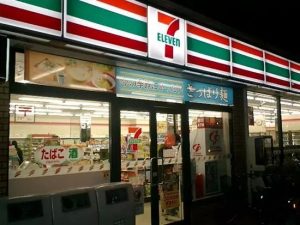Stationery store can also be the next 7-Eleven
When it comes to retail stores, 7-Eleven has become a benchmark, and there is even a saying in the industry: there are only two retail stores in Japan, 7-Eleven convenience stores and other convenience stores. For our stationery retail store, what aspects of 7-Eleven are worth learning from our stationery peers? Today we think through the case of 7-Eleven.
 [Office Partner Information Channel] Work on the basis of interpreting customer psychology
[Office Partner Information Channel] Work on the basis of interpreting customer psychology
The founder of 7-Eleven, Suzuki Minwen, believes that in the era of lack of materials, business can be done only by economic thinking. However, in a consumer society with excess materials, if you want to do business well, you must not only understand economics, but also To understand psychology.
1. Price psychology: “middle price†is more popular
The so-called price psychology means that in terms of price setting, we must start with the interpretation of consumer psychology. 7-Eleven is cleverly applied to price psychology when it comes to creating hot items. By displaying three similar products and using price differences, we create “intermediate price†products and make them hot products. Suzuki Minwen believes that “intermediate price†is more popular than “extreme priceâ€.
For example, the same brand of pens, the store displays 3 yuan and 10 yuan two price points, of course, the 3 yuan pen is better than the 10 yuan pen sales, but when adding a 20 yuan pen, 10 yuan The pen became the best-selling of the three commodities.
When there are only two kinds of pens, the customer can't really realize the advantage of the quality of the pen of 10 yuan. When the customer is difficult to compare the quality, the price will be used as a measure, and the price of the pen of 3 yuan is cheap. It doesn't look too bad. But when the three pens are displayed together, the customer can evaluate the value of the goods through both price and quality.
2. Consumer psychology behind the data
7-Eleven is also different from the commonly used "ABC" taxonomy when doing data analysis. In the "ABC" classification, the A grade is "hot goods" and the C grade is "sluggish goods". However, this method has defects that cannot be ignored. If X merchandise sales are 100, V sales are 50, and Z sales are 30. According to the "ABC" classification, X merchandise should be a hot item. However, if Z's inventory is only 30, and it is sold out within one day, then the hot sale should be Z.
Therefore, it is not easy to classify according to the ABC classification. In marketing, you must understand the customer psychology and emotions behind the numbers. When analyzing whether it is a hot item, you should not only pay attention to the quantity axis but also the time axis. In 7-Eleven's POS system, the specific time of each item sold out is extracted, combined with specific figures, so that the product is the real hot item.
3, different forms of promotion, sales are also different
The study found that the same promotions, the same services, the same goods, as long as you understand the customer psychology and change the form of expression, you can discover the potential needs and purchase desires of customers.
For example, 7-Eleven often implements the “100-yuan average price rice ball†activity. In terms of discount performance, instead of using the price reduction form, it is better to use the “average price of 100 yuan†to attract customers more; the same kind of ground meat, “ Although the description of 80% lean meat and "20% fat" is essentially the same, the customer does not hesitate to choose the latter when actually buying.
In the “cash return†activity, although the “cash return†is equivalent to disguised discount, the customer needs to go to the cashier to pay the bill, then return to the counter of the special service to return the cash. When there are many people, they have to queue up, which is more discount for the customer than the direct discount. It is much more troublesome, but "cash back" is more attractive than discounts.
4, the more the selection, the more customers will not hesitate when choosing
In order to make the most effective use of the limited space in the store, 7-Eleven will select the most popular ones among the wide variety of main products, and implement the shelf optimization strategy to achieve higher turnover. Why is it important to optimize the shelf? If a product can occupy enough space on the shelf, it can improve its expressiveness and more effectively exert its charm. At the same time, for the customer, each item can be seen more clearly, and it is easier to find the item you want.
A hot-selling product, after optimization, puts dozens of dozens on the shelf, and can sell more than 10, but if you don't optimize it, just put three or four on the shelf, it is easy because Unremarkable and missed by consumers, it becomes a slow-moving product.
For example, two shelves are placed far apart in the store, one shelf is full of a full range of gel pens, a total of 24, while the other shelf only displays a selection of six gel pens. The results showed that there were more people buying 6 kinds of gel pen shelves.
Although the display of 24 kinds of gel pens also contains potential hot-selling products, but because there are too many, the customers are dazzled, the performance of single-piece goods is insufficient, and most customers are far away from the troublesome "multiple-choice questions", which ultimately leads to customers. Loss.
Source of information: Internet
SINGLE WALL SS MUG WITH HANDLE
WUYI YINGYUAN IMP&EXP CO; LTD. , https://www.yingyuandrinkware.com